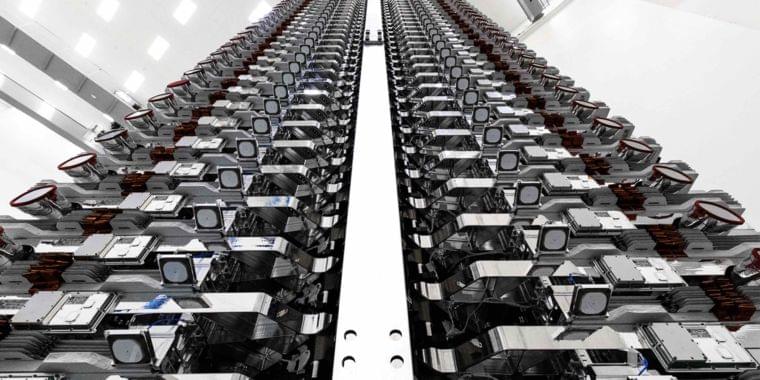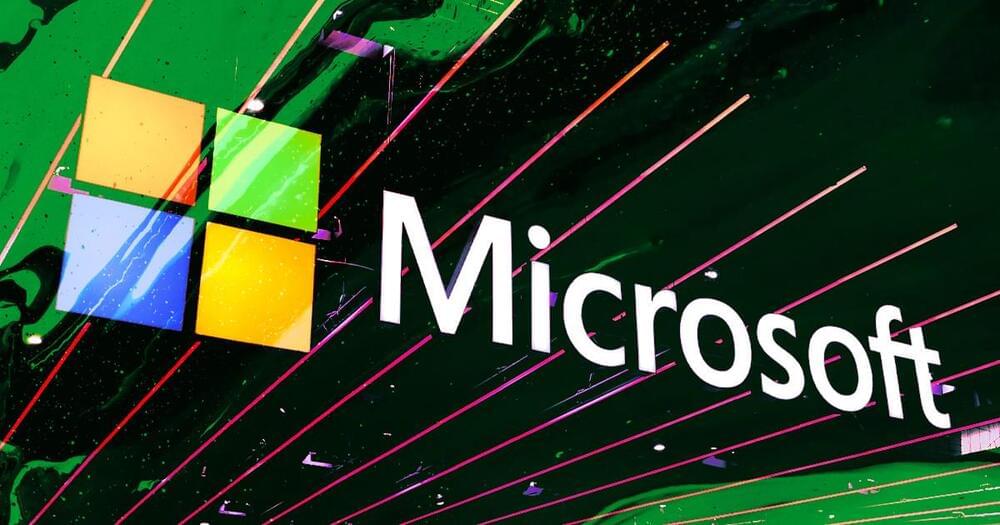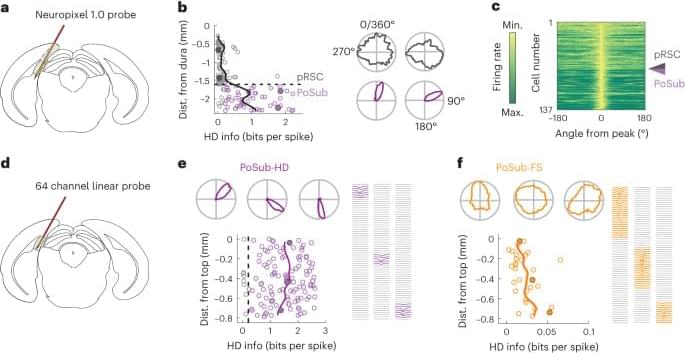Archive for the ‘internet’ category: Page 18
May 10, 2024
‘I don’t see any evidence of aliens.’ SpaceX’s Elon Musk says Starlink satellites have never dodged UFOs
Posted by Kelvin Dafiaghor in categories: Elon Musk, internet, satellites
SpaceX, with the Starlink constellation, has roughly 6,000 satellites, and not once have we had to maneuver around a UFO.
May 7, 2024
SpaceX’s Next Starship: Critical Updates and Future Missions
Posted by Chris Smedley in categories: internet, space travel

SpaceX’s dedication to pushing the boundaries of space travel is reflected in the constant evolution of Starship technology, with critical updates focused on enhancing control authority for future orbital missions and the potential for revolutionizing internet access in space Questions to inspire discussion What critic.
May 7, 2024
Microsoft Reportedly Building a GPT-4 Competitor Despite $10 Billion OpenAI Partnership
Posted by Shailesh Prasad in categories: internet, robotics/AI
Microsoft is said to be building an OpenAI competitor despite its multi-billion-dollar partnership with the firm — and according to at least one insider, it’s using GPT-4 data to do so.
First reported by The Information, the new large language model (LLM) is apparently called MAI-1, and an inside source told the website that Microsoft is using GPT-4 and public information from the web to train it out.
MAI-1 may also be trained on datasets from Inflection, the startup previously run by Google DeepMind cofounder Mustafa Suleyman before he joined Microsoft as the CEO of its AI department earlier this year. When it hired Suleyman, Microsoft also brought over most of Inflection’s staff and folded them into Microsoft AI.
May 5, 2024
Air Force project blends military and commercial space networks
Posted by Saúl Morales Rodriguéz in categories: internet, military, space
Join our newsletter to get the latest military space news every Tuesday by veteran defense journalist Sandra Erwin.
The demonstration is a key milestone in the Air Force Research Laboratory’s Defense Experimentation Using Commercial Space Internet, or DEUCSI — a program launched in 2018 to explore augmenting military communications by leveraging the growing commercial satellite internet industry.
May 3, 2024
Japanese firms unveil world’s first 6G device, transmits at 100 Gb/s
Posted by Gemechu Taye in category: internet
A group of Japanese telecommunication firms have developed a high-speed 6G wireless gadget that can carry data at up to 20 times the speed of 5G.
The device can transmit data at 100 gigabits per second (Gbps), at distances up to 330 feet (100 meters).
Four firms, namely DOCOMO, NTT Corporation, NEC Corporation, and Fujitsu, formed a consortium for the project. Since 2021, these companies have collaborated on research and development concerning sub-terahertz devices, foreseeing the dawn of the 6G era.
Apr 30, 2024
RIKEN Selects IBM’s Next-Generation Quantum System to be Integrated with the Supercomputer Fugaku
Posted by Dan Breeden in categories: business, economics, information science, internet, quantum physics, supercomputing
ARMONK, N.Y., April 30, 2024 — Today, IBM (NYSE: IBM) has announced an agreement with RIKEN, a Japanese national research laboratory, to deploy IBM’s next-generation quantum computer architecture and best-performing quantum processor at the RIKEN Center for Computational Science in Kobe, Japan. It will be the only instance of a quantum computer co-located with the supercomputer Fugaku.
This agreement was executed as part of RIKEN’s existing project, supported by funding from the New Energy and Industrial Technology Development Organization (NEDO), an organization under Japan’s Ministry of Economy, Trade and Industry (METI)’s “Development of Integrated Utilization Technology for Quantum and Supercomputers” as part of the “Project for Research and Development of Enhanced Infrastructures for Post 5G Information and Communications Systems.” RIKEN has dedicated use of an IBM Quantum System Two architecture for the purpose of implementation of its project. Under the project RIKEN and its co-PI SoftBank Corp., with its collaborators, University of Tokyo, and Osaka University, aim to demonstrate the advantages of such hybrid computational platforms for deployment as services in the future post-5G era, based on the vision of advancing science and business in Japan.
In addition to the project, IBM will work to develop the software stack dedicated to generating and executing integrated quantum-classical workflows in a heterogeneous quantum-HPC hybrid computing environment. These new capabilities will be geared towards delivering improvements in algorithm quality and execution times.
Apr 28, 2024
Could New Technique for ‘Curving’ Light be the Secret to Improved Wireless Communication?
Posted by Natalie Chan in categories: futurism, internet
A study that could help revolutionize wireless communication introduces a novel method to curve terahertz signals around an obstacle.
While cellular networks and Wi-Fi systems are more advanced than ever, they are also quickly reaching their bandwidth limits. Scientists know that in the near future they’ll need to transition to much higher communication frequencies than what current systems rely on, but before that can happen there are a number of — quite literal — obstacles standing in the way.
Researchers from Brown University and Rice University say they’ve advanced one step closer to getting around these solid obstacles, like walls, furniture and even people — and they do it by curving light.
Apr 27, 2024
Local origin of excitatory–inhibitory tuning equivalence in a cortical network
Posted by Dan Breeden in categories: internet, neuroscience
Varying the parameters of weight distribution did not account for the observed amount of HD information conveyed by PoSub-FS cells (Fig. 2a). Rather, we found that the number of inputs received by each output unit was a key factor influencing the amount of HD information (Extended Data Fig. 5e). Varying both weight distribution and the number of input units, we obtained a distribution of HD information in output tuning curves that matched the real data (Extended Data Fig. 5f), revealing that the tuning of PoSub-FS cells can be used to estimate both the distribution of weights and the number of input neurons. Notably, under optimal network conditions, Isomap projection of output tuning curve auto-correlograms has a similar geometry to that of real PoSub-FS cells (Extended Data Fig. 5g), confirming similar distribution of tuning shapes.
To further quantify the relative contributions of ADN and local PoSub inputs to PoSub-FS cell tuning, we expanded the simulation to include the following two inputs: one with tuning curve widths corresponding to ADN-HD cells and one with tuning curve widths corresponding to PoSub-HD cells (Fig. 4h, left). We then trained the model using gradient descent to find the variances and means of input weights that result in the best fit between the simulated output and real data. The combination of parameters that best described the real data resulted in ADN inputs distributed in a near Gaussian-like manner but a heavy-tailed distribution of PoSub-HD inputs (Fig. 4h, middle). Using these distribution parameters, we performed simulations to determine the contribution of ADN-HD and PoSub-HD inputs to the output tuning curves and established that PoSub-FS cell-like outputs are best explained by flat, high firing rate inputs from ADN-HD cells and low firing rate, HD-modulated inputs from PoSub-HD cells (Fig. 4h, right).
Our simulations, complemented by direct analytical derivation (detailed in the Supplementary Methods), not only support the hypothesis that the symmetries observed in PoSub-FS cell tuning curves originate from local cortical circuits but also demonstrate that these symmetries emerge from strongly skewed distributions of synaptic weights.
Apr 25, 2024
Space Age Security: How Satellites Could Extend Quantum Encryption Globally
Posted by Saúl Morales Rodriguéz in categories: computing, encryption, engineering, internet, quantum physics, satellites, security
How can we guarantee that data sent over the internet is only accessible to its intended recipient? Currently, our data is secured using encryption methods based on the premise that factoring large numbers is a complex task. However, as quantum computing advances, these encryption techniques may become vulnerable and potentially ineffective in the future.
Encryption by means of physical laws
Tobias Vogl, a professor of Quantum Communication Systems Engineering, is working on an encryption process that relies on principles of physics. “Security will be based on the information being encoded into individual light particles and then transmitted. The laws of physics do not permit this information to be extracted or copied. When the information is intercepted, the light particles change their characteristics. Because we can measure these state changes, any attempt to intercept the transmitted data will be recognized immediately, regardless of future advances in technology,” says Tobias Vogl.

















